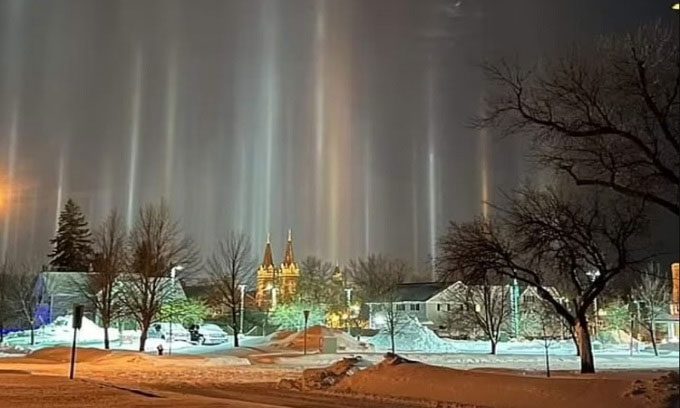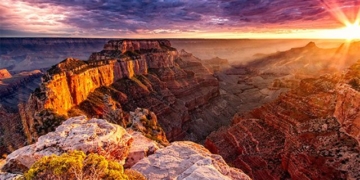Residents in states like Minnesota witnessed the phenomenon of light pillars in the frigid night sky last week, evoking thoughts of lights from extraterrestrial ships.

Light Pillars in Washington State, USA. (Photo: Twitter).
Though rare, light pillars typically form at night when light from the ground reflects off millions of tiny ice crystals suspended in the atmosphere. According to meteorologist David Samuhel from AccuWeather, these ice crystals are small enough to float in the air and only appear when temperatures drop below 0°C. In most cases, the temperature ranges from -10 to -20°C or colder. For instance, temperatures in Minnesota fell to -6°C. Witnesses reported that the light pillars were brighter and taller than in previous years. This may be a result of extreme cold weather, Mail reported on December 29.
Light pillars form when light is reflected by ice crystals lying horizontally, either suspended or sinking at low altitudes in the atmosphere. The ice crystals act like thousands of tiny mirrors in the sky, reflecting light as they gradually descend to the ground. This phenomenon is essentially an optical illusion.
Light pillars only occur under specific conditions. The temperature must be below freezing, and there should be little to no wind in the air. Otherwise, the hexagonal ice crystals will be disturbed. In calm conditions, the ice crystals maintain their horizontal fall. The presence of ice crystals at various altitudes causes the reflected image of the light source to stretch into a column shape.
Light pillars are commonly observed in cold climates during autumn and winter when temperatures are low enough for ice to form in the atmosphere. According to Samuhel, this phenomenon occurs under high pressure and in the absence of storms. Storm systems would disrupt the formation of light pillars. Although they may seem similar, light pillars differ from auroras in that they appear close to the ground, in the lowest layer of the atmosphere, while auroras are observed over much larger areas and at altitudes of several kilometers.


















































